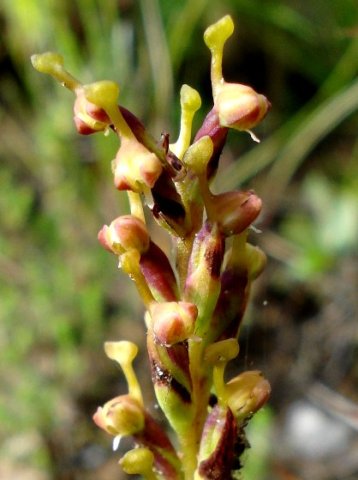Disa rungweensis dark matter

Author: Ivan Lätti
Photographer: Judd Kirkel Welwitch
Over time the inflorescence of Disa rungweensis seems to darken as in the photo. Especially the top parts of the erect floral bracts wither to a dark brown colour. The top parts of some ovaries in picture assume a deep purple colour.
Only the yellow bulges at the spur tips continue unaffected like banners, flying the colours and attracting attention. It is not known whether this species is one of the many orchids that has nectar to offer or not. Those without nectar still need pollination.
The lack of tradable currency does not prevent some orchids from trying their luck in the pollinator deception business. They may do this by mimicry, assuming a flower resemblance to a nectar producing species of the neighbourhood, or simply by flaunting vivid floral colours, suggesting abundance where there is none.
The unsuspecting gourmet tourists may wing or walk in, hungry and hopeful. Soon to wing or walk out again in disgust. Often not before some pollen became deposited upon their body parts, for dropping off in the next crooked eating place of the same ilk.
Subterfuge was not invented by humans. It has been in nature as a functional survival tool for long. Ethics is only human, although evolution has not yet succeeded in embedding it deeply enough into human nature. Maybe the cost-benefit ratio will never be attractive enough, for nectar is sweet (iNaturalist; www.orchidspecies.com; www.nyika-vwaza-trust.org).

